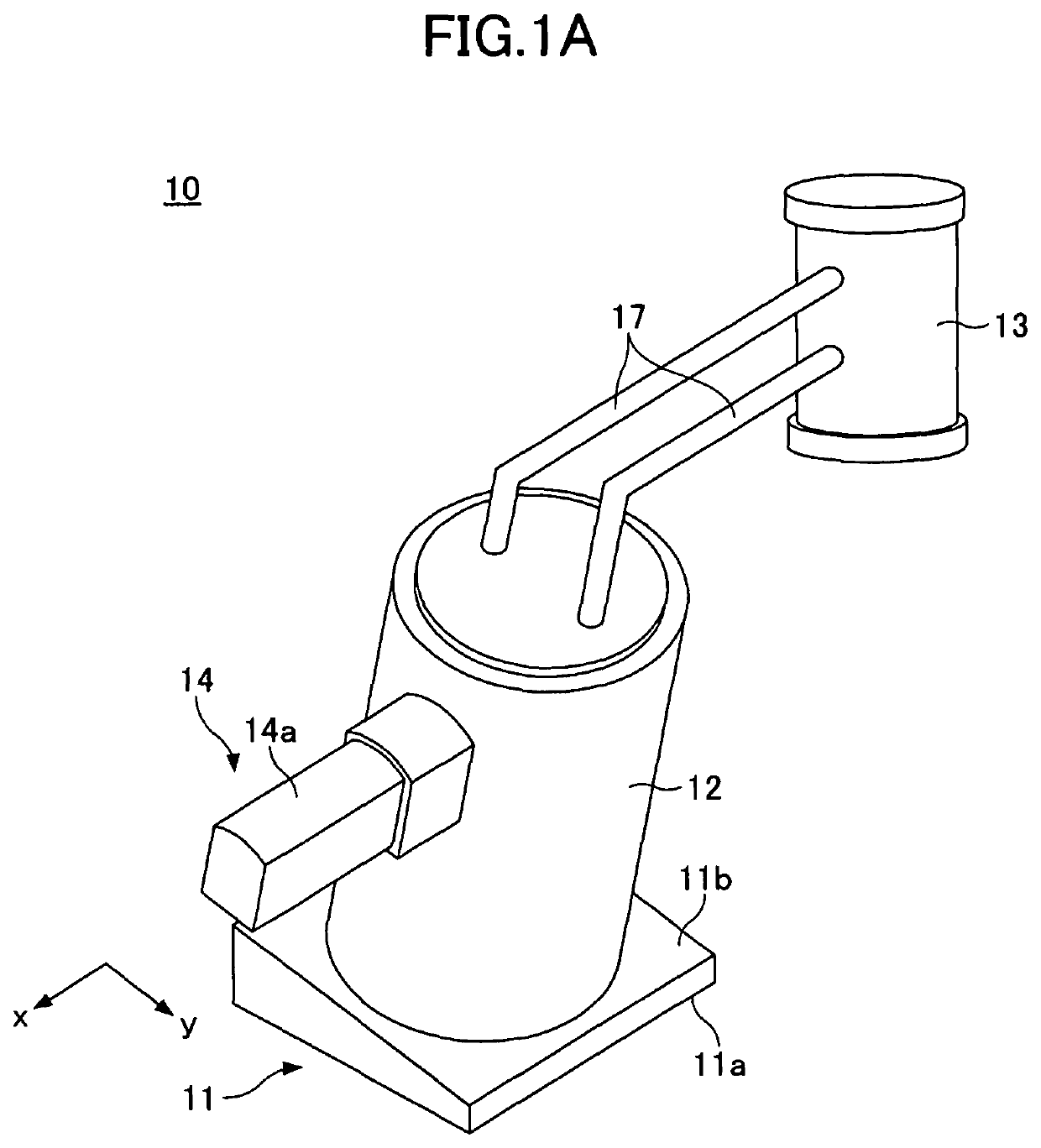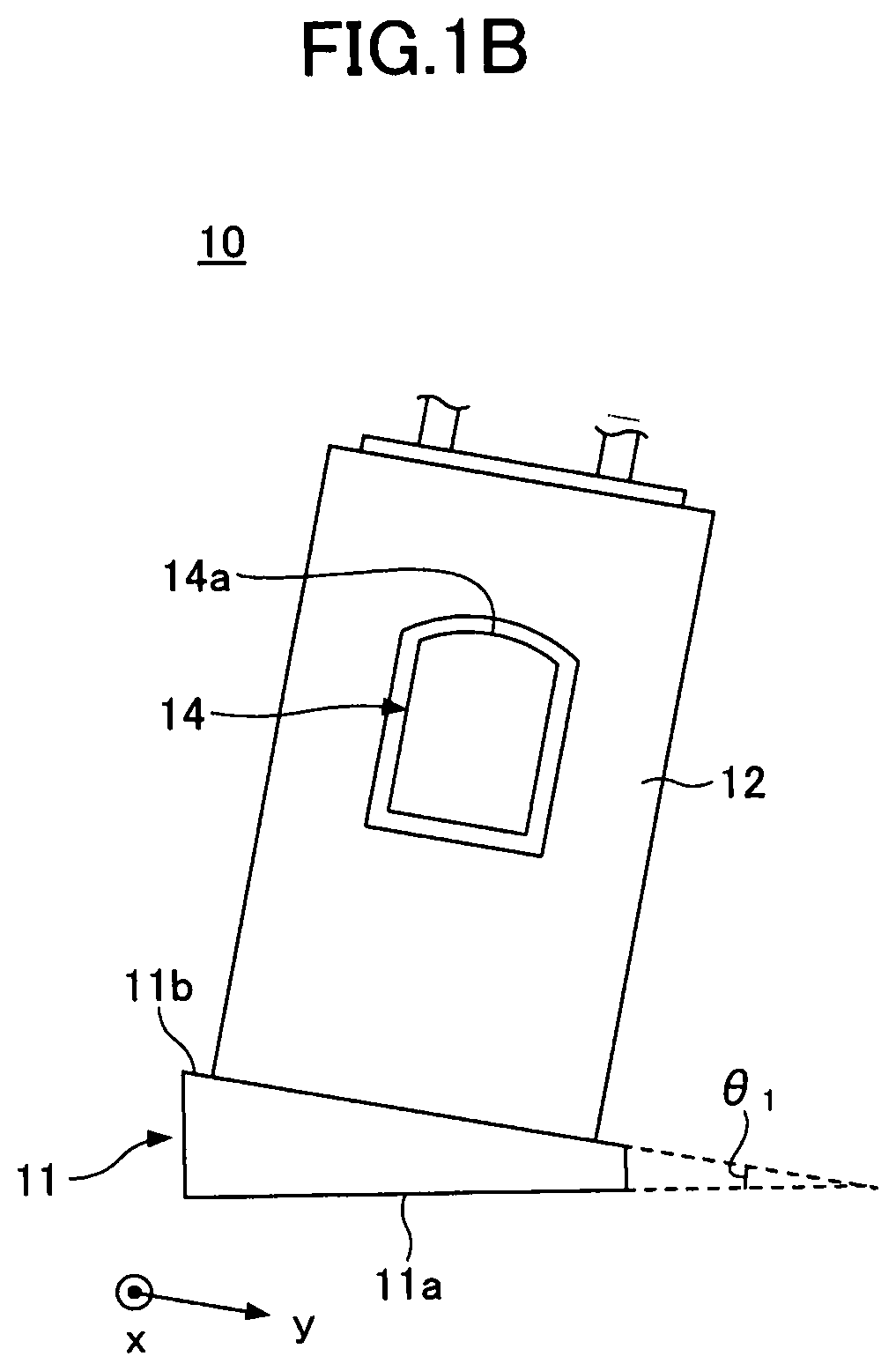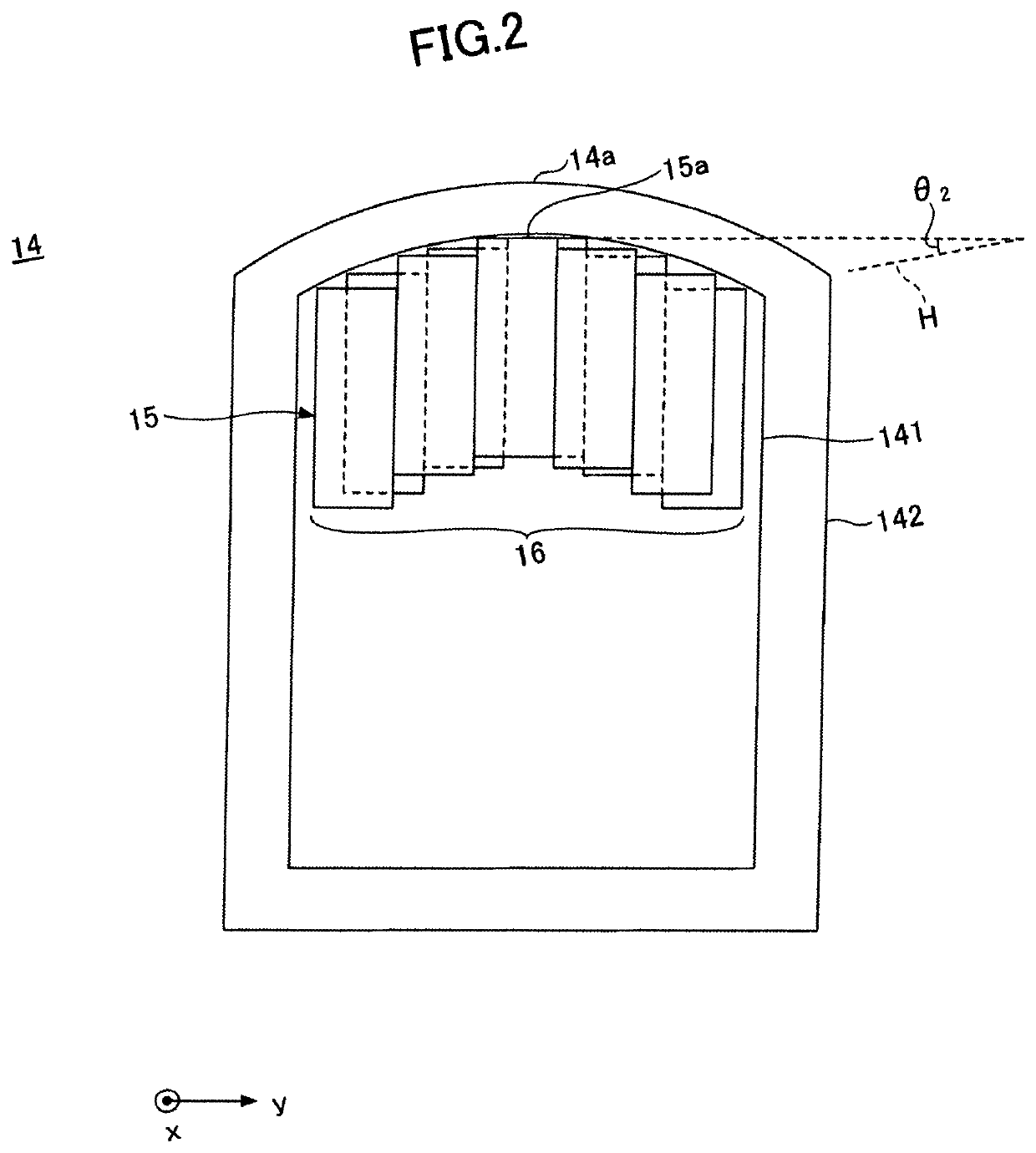Magnetic measuring apparatus
a technology of magnetic measuring and measuring apparatus, which is applied in the direction of magnetic field measurement using superconductive devices, instruments, therapy, etc., can solve the problems of reducing the mobility of the spine unable to freely bend the cervical region and the lumbar region of an elderly person, and unable to properly measure the biomagnetism of the elderly person
- Summary
- Abstract
- Description
- Claims
- Application Information
AI Technical Summary
Benefits of technology
Problems solved by technology
Method used
Image
Examples
example 1
[0050]X-ray photography and biomagnetism measurement of the cervical region were conducted in a manner similar to Comparative Example 1 except that the magnetic measuring apparatus 10 including the incline mount 11 was used instead of the magnetic measuring apparatus 10x that does not include the incline mount 11.
[0051]In Example 1, the inclination gantry 11 with an inclination angle θ1 of 5 degrees was used, and the inclination angle θ2 was set at 5 degrees. Because the upper surface of the bed 21 is horizontal (or parallel to the mount surface 11a), the inclination angle θ2 becomes equal to an angle (which is hereafter referred to as an angle θ3) formed between an examination region of the subject 500 and the sensor surfaces 15a of the magnetic sensors 15.
[0052]The average distance L was 107.1 mm, the largest distance L was 151 mm, and the smallest distance L was 93 mm. Thus, the distance L was significantly reduced compared with Comparative Example 1. Here, the significant reduct...
example 2
[0054]X-ray photography and biomagnetism measurement of the cervical region were conducted in a manner similar to Example 1 except that the inclination angle θ1 was set at 10 degrees and the inclination angle θ2 was set at 10 degrees.
[0055]The average distance L was 103.1 mm, the largest distance L was 121 mm, and the smallest distance L was 87 mm. Thus, the distance L was further reduced compared with Example 1.
[0056]In the measurement at the cervical region using the magnetic measuring apparatus 10, weak propagation signals were detected in 25 subjects out of 27 subjects, and the signal detection rate was 92.6%. Thus, the signal detection rate exceeded 90% and significantly improved compared with Comparative Example 1.
example 3
[0057]X-ray photography and biomagnetism measurement of the cervical region were conducted in a manner similar to Example 1 except that the inclination angle θ1 was set at 15 degrees and the inclination angle θ2 was set at 15 degrees.
[0058]The average distance L was 101.1 mm, the largest distance L was 120 mm, and the smallest distance L was 87 mm. Thus, the distance L measured in Example 3 did not differ greatly from that measured in Example 2.
[0059]In the measurement at the cervical region using the magnetic measuring apparatus 10, weak propagation signals were detected in 25 subjects out of 27 subjects, and the signal detection rate was 92.6%. Thus, the signal detection rate exceeded 90% and significantly improved compared with Comparative Example 1.
PUM
 Login to View More
Login to View More Abstract
Description
Claims
Application Information
 Login to View More
Login to View More - R&D
- Intellectual Property
- Life Sciences
- Materials
- Tech Scout
- Unparalleled Data Quality
- Higher Quality Content
- 60% Fewer Hallucinations
Browse by: Latest US Patents, China's latest patents, Technical Efficacy Thesaurus, Application Domain, Technology Topic, Popular Technical Reports.
© 2025 PatSnap. All rights reserved.Legal|Privacy policy|Modern Slavery Act Transparency Statement|Sitemap|About US| Contact US: help@patsnap.com



